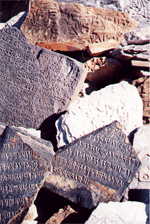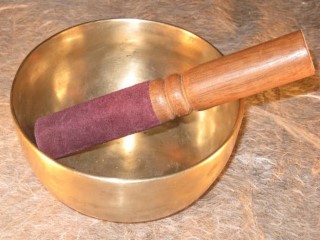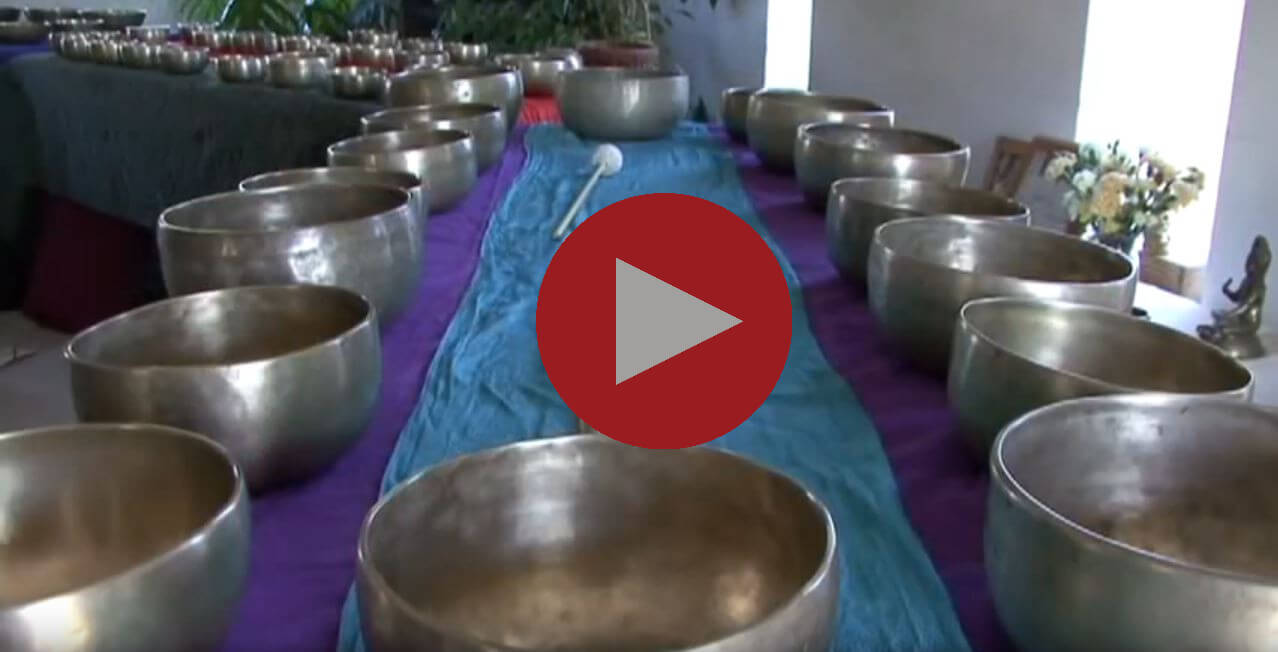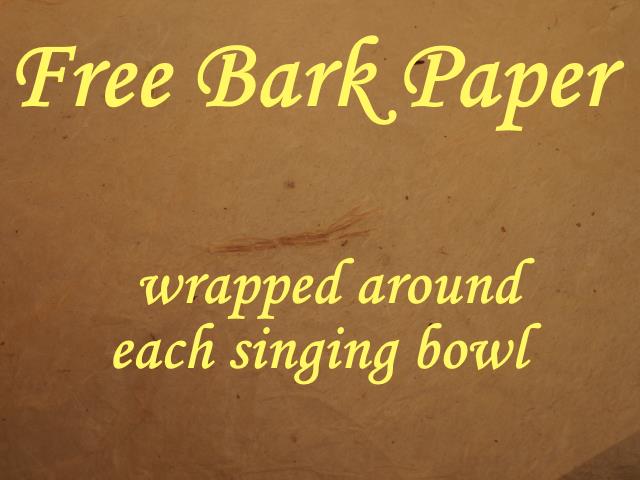Where did singing bowls originate? The history of singing bowls begins at a time and culture with few written records, long before the advent of modern industrialization. The first metal bowls were likely made of pure copper well over 5,000 years ago. Brass, a mixture of copper with other metals, is a later technology still thousands of years old. There are stories that 2,000 year old brass bowls were in Tibet at the turn of the last century.

While there is some folklore about the makers of the singing bowls, typically knowledge of a given singing bowl’s origin died with its first or second owner. Bowl making was literally a cottage industry with crude smelting and careful metalworking taking place in the home of the artisan. Skills were passed from generation to generation until the modern age where those ancient chains were broken.
Tibetan Singing Bowl History
Common singing bowls, an important possession for very practical reasons, were likely the regular product of artisans. Very special singing bowls were sometimes made to order. For some of the most special bowls, a highly skilled artisan might be provided with very unique materials. Many Tibetan singing bowls were made in Nepal as were a number of other manufactured items over the last millennium. It’s likely that specific sound qualities were designed with sound healing in mind.

Some singing bowls such as those with lingams, were obviously made for ceremonial use. Sometimes they bear inscriptions indicating they were gifts to monasteries. The incredible musical qualities of some singing bowls would lead one to believe these were intentionally tuned for specific resonance. The fact that it is possible to make functional brass bowls with less expensive metals is evidence many premium quality singing bowls were made with sound in mind. However, the real history of the bowls and intentions of the makers are lost in time.
The Tibetans had the gold and the Nepalis the skills. Many Tibetan singing bowls and other ritual objects were made in Nepal, often of material that originated in Tibet, and then sent over the Himalayas. There is disagreement about whether large numbers singing bowls were ever made in Tibetan monasteries. We know that metallurgy of the type used in the bowls has existed in this area for thousands of years.The tremendous pressure that created the Himalayas also created unique alloys of metals, which are close to the surface. Antique copper and antique brass objects are relatively common in this part of the world.
Singing Bowls as a Storehouse of Value
Really old singing bowls tend to be very thick and heavy, in many cases impractically so. I recently heard a plausible explanation for this. In a society where the only kind of currency was coins and the value of that currency was based on its weight and metallic composition singing bowls were able to be used like money. Each village would have a metal handler who would happily exchange the currency of the land for the intrinsic value in the weight of the bowls. Heavy bowls were often given as wedding gifts and the better off would periodically exchange their worn bowls for new ones.
What Were Singing Bowls Used For?
I have done some research into the instances of brass and copper bowl use documented in Nepal and Tibet by English language sources published sources prior to 1950. The most common uses I found were for storage of water and grains and for use as bowls and cups. There were a number of references to brass bowls being a common dowry item or wedding gift which would attest to their practical utility. Bowls were used in conjunction with charcoal and tobacco. I came across to one reference where a bowl was used for divination (via reading a broken egg). There are relatively few references to bowls and sounds. In a way this isn’t surprising as many inner practices were entirely hidden from outsiders, especially in virtually inaccessible Tibet.
Singing Bowl Stories
One story I heard about the making of the Tibetan singing bowls was that an order for a set of singing bowls might include instructions such as “dig in the riverbank at such and such location”. The idea is that unique alloys were specifically chosen for some of the singing bowls. One of the beauties of antique singing bowls is the individuality of their composition. In addition to copper and tin there are traces of many other metals; up to 12 different metals in some cases.
While the term Tibetan singing bowl might be a modern construction the blending of sound and practice goes back further in Tibet even than the introduction of Buddhism. In the Bon tradition as well as all the schools of Tibetan Buddhism bells, horns and gongs are used in ceremony. One early visitor to Tibet reported in a 1909 book of witnessing a ceremony of a thousand monks each making a sound with their own bowl. People have told me of meeting Tibetan refugees in the 1960’s and 1970’s who were selling “sound bowls” they had brought over the Himalayas. Just like the bowl makers art many of these sound practices have been lost. It is a rare Tibetan teacher that makes use of singing bowls in their practices today.
Some Other Writers on Singing Bowl History
Websites with good information about Tibetan singing bowl history and dating are those of Mitch Nur and Frank Perry. Mitch traveled extensively in the Himalayas prior to the 1980’s and studied with a number of teachers there. Frank has been collecting singing bowls since the early 1970’s and has singing bowls brought back from Tibet in the early 1900’s in his collection. So both these men have firsthand knowledge of singing bowls prior to their popularity and the advent of fakes. Their websites are full of information about many aspects of Tibetan singing bowls, including their origins, and are worth a read.
Recent Singing Bowl History

What we do know is that in the recent past, say 50-60 years ago, handmade brass bowls were the staple in kitchens and the marketplace for storage eating and cooking. You never see spices in a street market displayed in a singing bowl or get served dal in one anymore but that was common in living memory.
At the present time the bowls are coming out of the homes in rural communities for the practical reason that modern plastics, aluminum and stainless steel are better suited for the mundane tasks these artifacts are now employed for. A bowl that has been in a home for generations is easily let go of because items of antiquity are simply not valued in that culture in the way antiques are in ours.
How many antique singing bowls were there – and what has become of them.
How to estimate the age of an old Himalayan bowl
The interesting parallel history of old US coins in the 60’s and old singing bowls today
















